Symplocarpus foetidus
Skunk Cabbage, Eastern Skunk Cabbage
[ click on any image below to see larger version ]
Family:
Araceae
(Arum family; monocot)
Mid-Atlantic bloom time:
January - February
Skunk Cabbage is one of the earliest plants to bloom in the year.
Generating its own heat, it pushes up a spathe through the ground, even melting snow.
The spathe contains a spadix with numerous small yellow flowers, producing a fetid smell to attract flies for pollination.
The large leaves emerge later, after flowering.
Skunk Cabbbage's genus name Symplocarpus is from ancient Greek symploce for meaning connection or interweaving,
and carpos for "fruit" referring to the connection of the ovaries into a compound fruit.
Its species name foetidus is from Latin, meaning foul smelling, referring to the foul smell of the flower, or
to the skunk-like smell of its leaves when crushed.
In the 19th century, the U.S. Pharmacopoeia listed Skunk Cabbage as the drug "dracontium". It was used in the treatment of respiratory diseases, nervous disorders, rheumatism, and dropsy.
It is not considered edible raw because the roots are toxic and the leaves can burn the mouth.
20 April 2018
Bull Run Mountains Natural Area Preserve, Haymarket, VA
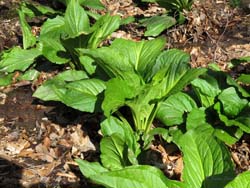
|
6 January 2007
Bull Run Mountains Natural Area Preserve, Haymarket, VA
(newly emerged flowers)
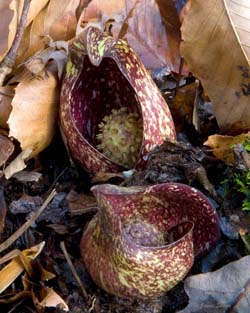
|
6 January 2007
Bull Run Mountains Natural Area Preserve, Haymarket, VA
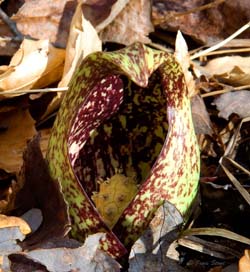
|
20 March 2021
Bull Run Mountains Natural Area Preserve, Haymarket, VA
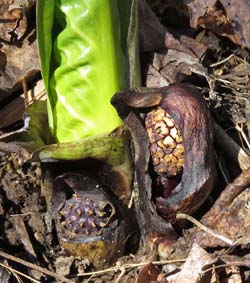
|
9 April 2005
C&O Canal National Historic Park, Potomac, MD
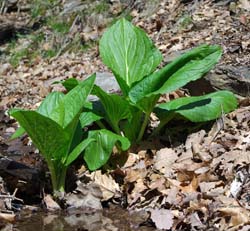
|
1 May 2023
Great Falls National Park, Great Falls, VA
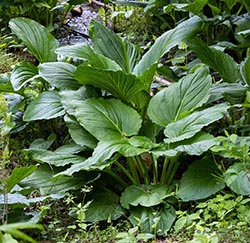
|
20 July 2023
Great Falls National Park, Great Falls, VA
(developing fruit)
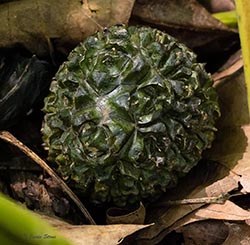
|
|
Return to list of flora






